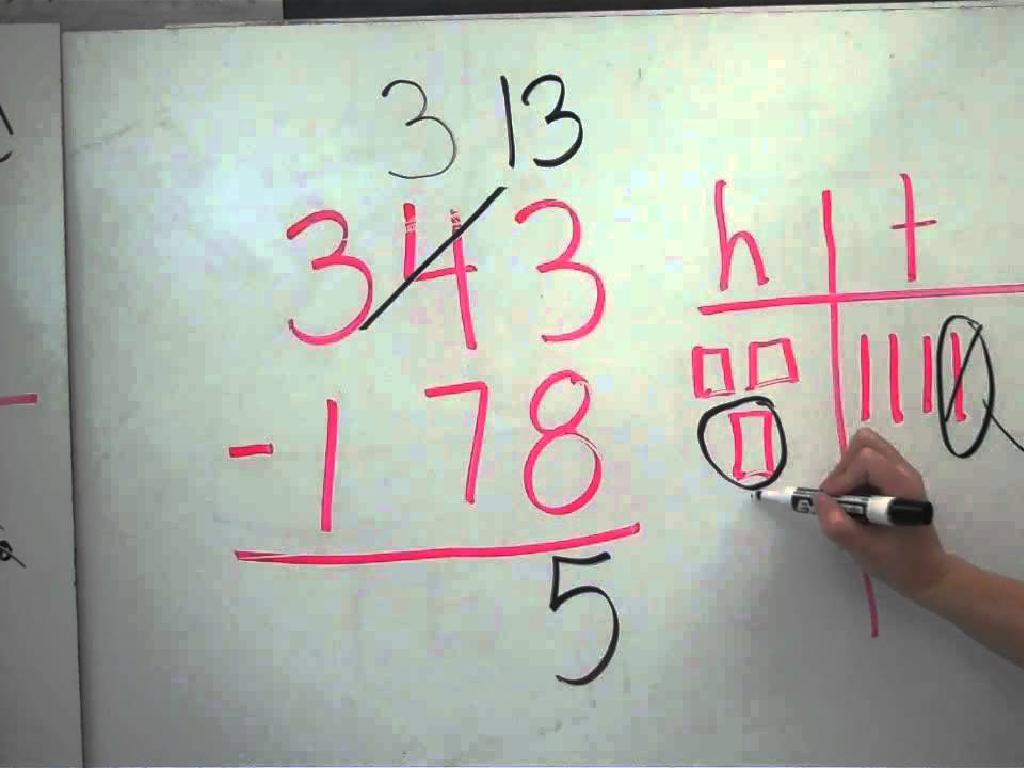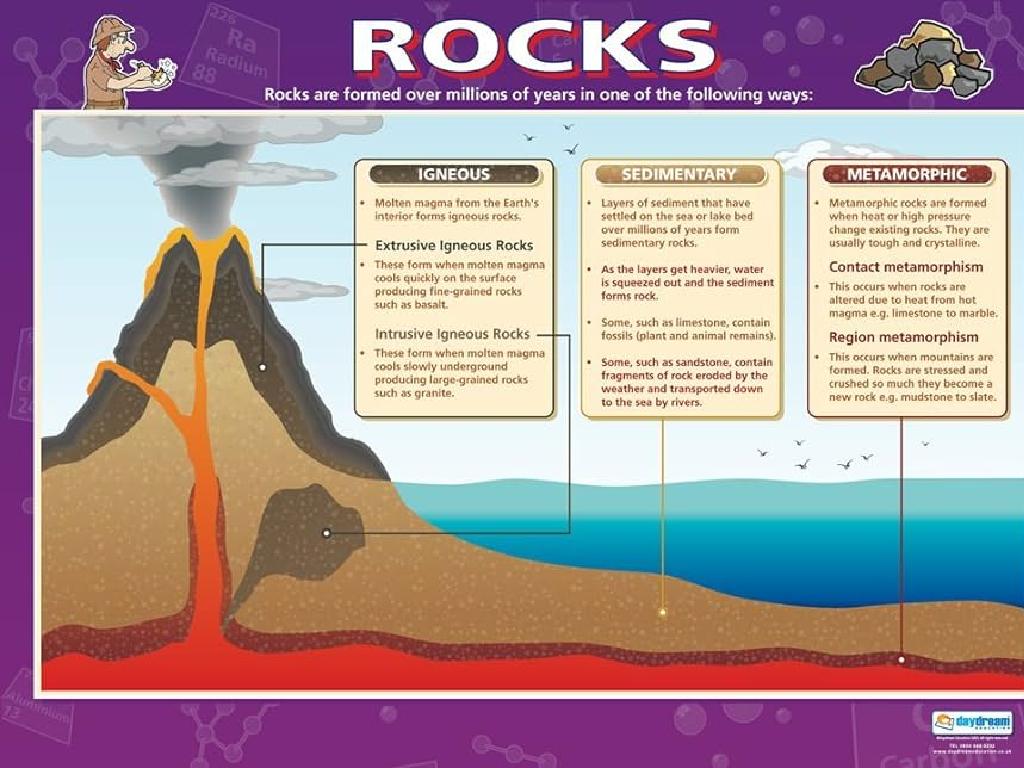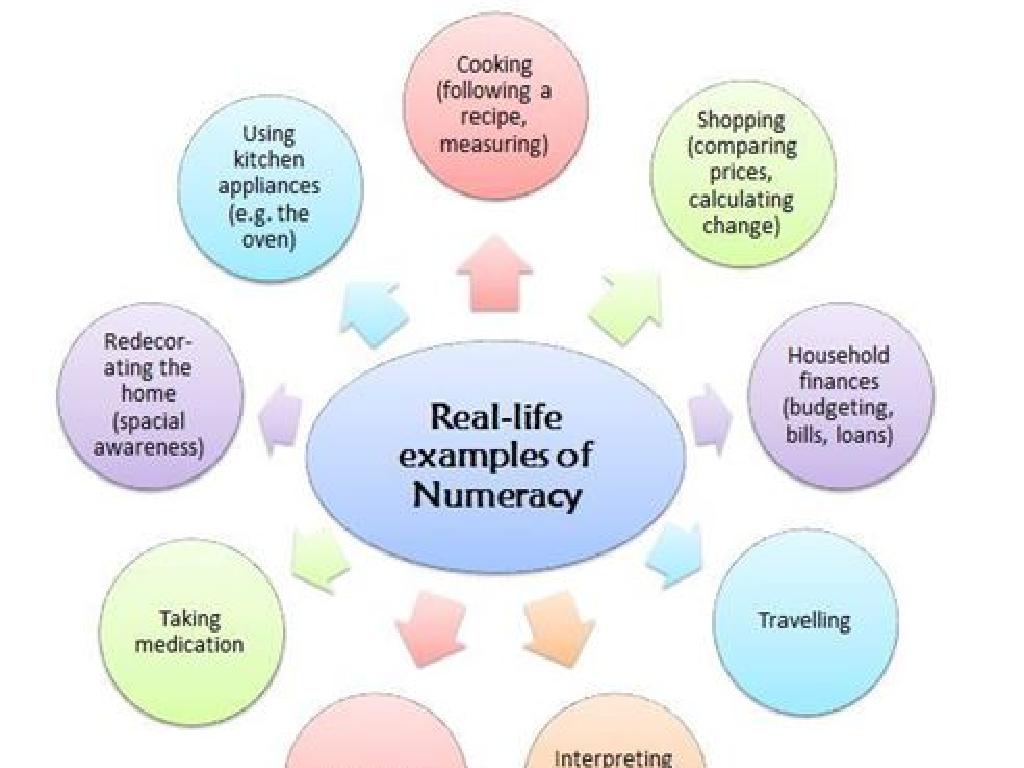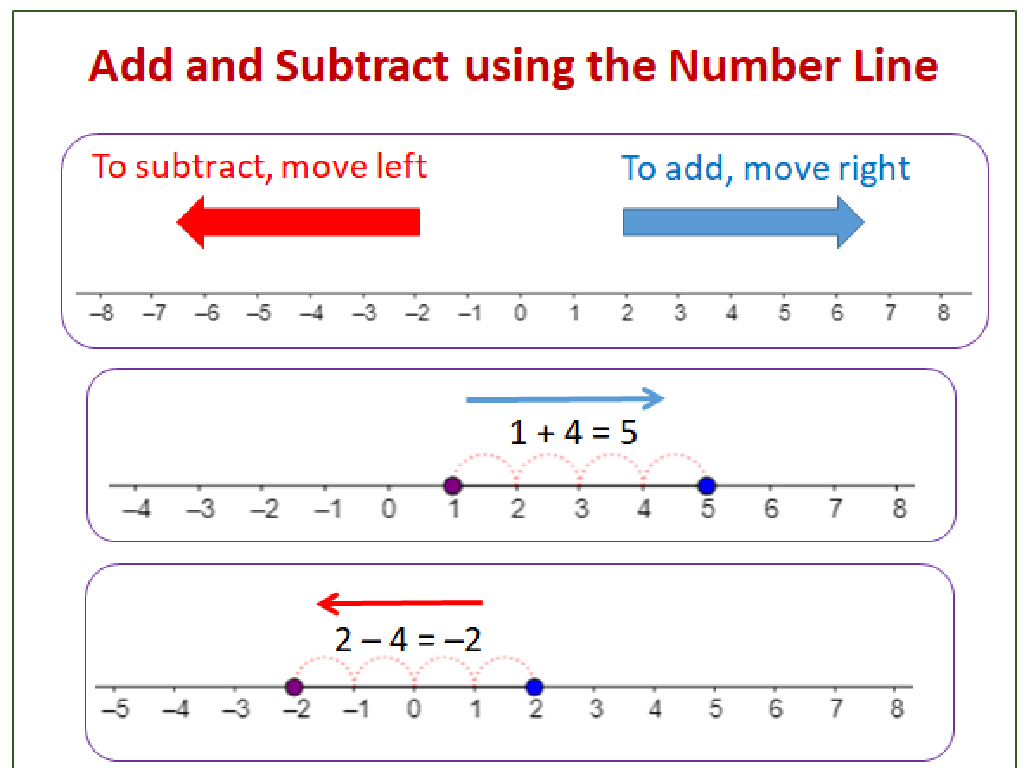Describe Relationships Among Quadrilaterals
Subject: Math
Grade: Fifth grade
Topic: Quadrilaterals
Please LOG IN to download the presentation. Access is available to registered users only.
View More Content
Exploring Quadrilaterals
– What are quadrilaterals?
– A shape with four straight sides and angles
– ‘Quad’ means four
– Quadrilaterals have 4 sides
– Each side connects at a corner to make 4 angles
– Different types of quadrilaterals
– Squares, rectangles, and trapezoids are all quadrilaterals
|
This slide introduces the concept of quadrilaterals to fifth-grade students. Begin by explaining that a quadrilateral is any four-sided figure with straight sides. Highlight the prefix ‘quad-‘ which means four, helping them to remember the key characteristic of quadrilaterals. Discuss that these shapes have four sides and angles, and that the sides must connect to form closed figures. Introduce different types of quadrilaterals such as squares, rectangles, rhombuses, and trapezoids, emphasizing that they all belong to the quadrilateral family despite their different appearances. Encourage students to think of examples of quadrilaterals they see in everyday life to make the concept more relatable.
Exploring Quadrilaterals
– What is a quadrilateral?
– A shape with four sides and four corners.
– Key properties of quadrilaterals
– Each has 4 edges, 4 vertices, and angles add up to 360°.
– Types of quadrilaterals
– Includes squares, rectangles, trapezoids, parallelograms.
– Sum of interior angles
– No matter the type, the angles inside always total 360°.
|
This slide introduces students to the basic concept of quadrilaterals, which are four-sided polygons. Emphasize that quadrilaterals are everywhere in our environment, from windows to tables. Highlight the common properties they share: four sides (edges), four corners (vertices), and that the sum of the interior angles always adds up to 360 degrees. Provide examples of different quadrilaterals such as squares, rectangles, trapezoids, and parallelograms, and discuss how they fit into the broader category of quadrilaterals. Encourage students to think of other examples of quadrilaterals they encounter in daily life. This foundational knowledge sets the stage for understanding the relationships among different quadrilaterals.
Exploring Quadrilateral Relationships
– Quadrilaterals: side & angle categories
– A shape with four sides; categorized by sides and angles.
– Parallel sides: rectangles & parallelograms
– Both have opposite sides parallel and equal in length.
– Unique sides: kites & trapezoids
– Kites have two pairs of adjacent equal sides; trapezoids only one pair of parallel sides.
– Comparing quadrilateral properties
|
This slide introduces students to the different categories of quadrilaterals based on their side lengths and angle measurements. Emphasize that quadrilaterals are a family of shapes with four sides, and they can be sorted into groups by looking at their sides and angles. Rectangles and parallelograms are examples of quadrilaterals with pairs of parallel sides, which means their opposite sides are the same length and run parallel to each other. Kites and trapezoids, on the other hand, have their own unique set of side lengths and angles, with kites having two pairs of adjacent sides that are equal and trapezoids having only one pair of parallel sides. Encourage students to think about how these properties define each shape and how they can compare different quadrilaterals based on these characteristics.
Exploring Quadrilateral Properties
– Squares: 4 equal sides, 4 right angles
– Example: A chessboard’s squares
– Rectangles: Opposite sides equal, 4 right angles
– Example: Your classroom’s door
– Parallelograms: Opposite sides and angles equal
– Example: A slanted picture frame
– Trapezoids: At least one pair of parallel sides
– Example: The shape of a kite
|
This slide aims to help students recognize and differentiate between various types of quadrilaterals based on their properties. A square is a regular quadrilateral with all sides and angles equal, easily seen in a chessboard. Rectangles, like the door of a classroom, have equal opposite sides and angles but are not necessarily equal in all sides. Parallelograms, such as a slanted picture frame, have the unique property of equal opposite sides and angles. Lastly, trapezoids are identified by having at least one pair of parallel sides, which can be visualized as the shape of a kite. Encourage students to find these shapes in their surroundings to better understand their properties.
Comparing Quadrilaterals
– Squares vs. Rectangles
– Both have 4 sides and 4 angles, but squares have equal sides.
– Parallelograms vs. Trapezoids
– Parallelograms have opposite sides parallel, trapezoids only one pair.
– Common features in quadrilaterals
– 4 sides, angles adding up to 360 degrees, and flat shapes.
|
This slide aims to help students understand the relationships and differences among various quadrilaterals. Start by discussing squares and rectangles, highlighting that while both have four right angles, squares have four sides of equal length, whereas rectangles do not. Then, compare parallelograms to trapezoids, noting that parallelograms have two pairs of parallel sides, while trapezoids have only one. Emphasize the common features of quadrilaterals, such as having four sides, the sum of interior angles equaling 360 degrees, and being two-dimensional shapes. Use diagrams to illustrate each type of quadrilateral and their properties. Encourage students to draw their own examples and to identify these shapes in the classroom or at home.
Quadrilateral Family Tree
– Explore the quadrilateral tree
– Understand how different quadrilaterals are related
– Squares are special rectangles
– All squares have equal sides, making them rectangles too
– Squares are also parallelograms
– Squares have parallel sides like all parallelograms
– Not all parallelograms are squares
– Parallelograms don’t always have 4 equal sides
|
This slide introduces students to the concept of the quadrilateral family tree, which helps them understand the relationships among different types of quadrilaterals. Emphasize that while all squares are rectangles due to their equal angles, the reverse is not true because rectangles don’t require equal side lengths. Similarly, squares fit the definition of a parallelogram (opposite sides are parallel), but parallelograms vary more in shape and don’t always have equal side lengths or angles. Use diagrams to illustrate these relationships, and encourage students to draw their own examples. This foundational knowledge will help them with more complex geometry concepts in the future.
Real-Life Quadrilaterals
– Find quadrilaterals in daily life
– Look around to spot everyday items with 4 sides
– Different quadrilaterals in objects
– Compare shapes like rectangles in books and squares in tiles
– Suitability of shapes for purposes
– Why is a door shaped like a rectangle, not a trapezoid?
– Discuss everyday shape usage
|
This slide aims to help students recognize and understand the presence and practicality of quadrilaterals in their daily environment. Encourage students to observe and identify quadrilaterals around them, such as windows, books, and tiles. Discuss how different quadrilaterals serve various functions in everyday objects, like the stability provided by the rectangular shape of a door. Explain why certain shapes are more suitable for specific purposes, for example, why a square might be chosen for floor tiles due to its symmetry and ease of layout. Engage the class in a discussion about where they see these shapes in their own lives and why they think those shapes were chosen for those objects.
Quadrilateral Scavenger Hunt Activity
– Explore the classroom on a scavenger hunt
– Find objects shaped like quadrilaterals
– Look for squares, rectangles, trapezoids, etc.
– Draw and label each quadrilateral
– Use your math notebook to sketch
– Discuss the characteristics of each
– How many sides? Are they parallel or equal?
|
This interactive activity is designed to help students recognize quadrilaterals in the world around them. Provide students with examples of quadrilaterals like squares, rectangles, rhombuses, and trapezoids. Encourage them to search the classroom for objects that resemble these shapes. Once they find an object, they should draw it in their notebooks and label its sides and angles. After the hunt, regroup and discuss the properties of the found quadrilaterals, such as the number of sides, parallel sides, and equal angles. This will reinforce their understanding of the relationships among different quadrilaterals. Possible variations of the activity could include finding quadrilaterals in magazines, creating them with craft materials, or using interactive geometry software.
Quadrilaterals: Conclusion & Review
– Recap quadrilateral properties
– Remember: Squares have 4 equal sides, rectangles have opposite sides equal, and all have 4 angles.
– Importance of their relationships
– Knowing these helps in geometry, like solving puzzles and understanding shapes around us.
– Think of questions for next class
– Review with fun activities
– We’ll play ‘Name That Quadrilateral’ and ‘Quadrilateral Match-up’ to reinforce our learning.
|
This slide aims to summarize the key points from the lesson on quadrilaterals. Start by recapping the properties of different quadrilaterals, such as squares, rectangles, rhombuses, and trapezoids, and their defining characteristics. Emphasize the importance of understanding these relationships for future mathematical concepts and real-life applications, such as architecture and design. Encourage students to come up with any questions they may have for clarification in the next class. Conclude with engaging review activities to solidify their understanding, such as matching games or identifying quadrilaterals in everyday objects.





